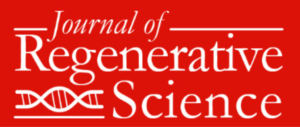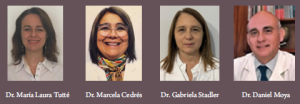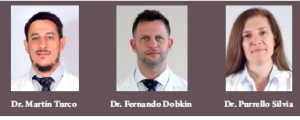Exploratory Analysis of Pain and Function Improvement after Radial Pressure Wave Therapy in Plantar Fasciitis
Original Article | Vol 5 | Issue 1 | January-June 2025 | page: 08-13 | Armando Tonatiuh Ávila García, Ana Lilia Villagrana Rodríguez, Cinthia Citlalli Domínguez Navarrete, Karen Chacón Morales, Marco Antonio González López
DOI: https://doi.org/10.13107/jrs.2025.v05.i01.159
Open Access License: CC BY-NC 4.0
Copyright Statement: Copyright © 2025; The Author(s).
Submitted Date: 07 Mar 2025, Review Date: 30 Apr 2025, Accepted Date: 10 May 2025 & Published: 30 Jun 2025
Author: Armando Tonatiuh Ávila García [1], Ana Lilia Villagrana Rodríguez [1], Cinthia Citlalli Domínguez Navarrete [1], Karen Chacón Morales [1], Marco Antonio González López [1]
[1] Department of Physical Medicine and Rehabilitation, Hospital Civil de Guadalajara Fray Antonio Alcalde, Jalisco, México, 44280
Address of Correspondence
Dr. Armando Tonatiuh Ávila García,
Department of Physical Medicine and Rehabilitation, Hospital Civil de Guadalajara Fray Antonio Alcalde, Coronel Calderón 777, Guadalajara, Jalisco, México, 44280
E-mail: atavila@hcg.gob.mx
Abstract
Background: Plantar fasciitis (PF) is a common cause of heel pain, impairing functionality and quality of life. Radial pressure wave therapy (RPWT) is a well-known non-invasive option to treat PF, but evidence on factors influencing outcomes is limited.
Objectives: The objectives of the study are to explore associations between baseline patient characteristics and clinical outcomes and to evaluate the impact of RPWT on pain and functionality in PF patients.
Materials and Methods: This exploratory, pilot study included 19 PF patients treated with three RPWT sessions. Pain intensity (numerical pain rating scale [NPRS]) and functionality (World Health Organization Disability Assessment Schedule 2.0 [WHODAS 2.0]) were assessed pre- and post-treatment. Retrospective data on age, body mass index (BMI), and PF chronicity were analyzed. Statistical tests included Wilcoxon signed rank for outcome comparisons and Spearman’s correlation for associations.
Results: NPRS scores decreased significantly from 6.89 ± 1.88 to 4.42 ± 2.36 (P = 0.001), while WHODAS 2.0 scores improved from 47.60 ± 21.85 to 21.34 ± 20.30 (P = 0.001). Baseline NPRS scores showed a moderate, positive correlation with post-treatment NPRS scores (ρ = 0.561, P = 0.01). No significant correlations were found between post-treatment outcomes and BMI, age, or PF chronicity.
Conclusion: RPWT significantly reduced pain and improved functionality in PF patients, with baseline pain levels emerging as a factor associated with outcomes. These preliminary findings support RPWT as a promising treatment and highlight the need for larger, controlled studies to validate and expand these results.
Keywords: Pain intensity, Plantar fasciitis, Radial pressure wave therapy, Rehabilitation outcomes, Therapeutic effectiveness, Treatment predictors
References:
1. Rhim HC, Kwon J, Park J, Borg-Stein J, Tenforde AS. A systematic review of systematic reviews on the epidemiology, evaluation, and treatment of plantar fasciitis. Life (Basel) 2021;11:1287.
2. Sezaki Y, Ikeda N, Toyoshima S, Aoki A, Fukaya T, Yokoi Y, et al. Analgesic effect and efficacy rate of radial extracorporeal shock wave therapy for plantar fasciitis: A retrospective study. J Phys Ther Sci 2024;36:537-541. Erratum in: J Phys Ther Sci 2024;36:684.
3. Elía Martínez JM, Schmitt J, Tenías Burillo JM, Valero Inigo JC, Sánchez Ponce G, Peñalver Barrios L, García Fenollosa M, et al. Comparación de la terapia de ondas de choque extracorpóreas focales y presión radiales en la fascitis plantar [Comparison between extracorporeal shockwave therapy and radial pressure wave therapy in plantar fasciitis]. Rehabilitacion (Madr) 2020;54:11-8.
4. Salvioli S, Guidi M, Marcotulli G. The effectiveness of conservative, non-pharmacological treatment, of plantar heel pain: A systematic review with meta-analysis. Foot (Edinb) 2017;33:57-67.
5. Hedrick MR. The plantar aponeurosis. Foot Ankle Int 1996;17:646-9.
6. Simplicio CL, Purita J, Murrell W, Santos GS, Dos Santos RG, Lana JF. Extracorporeal shock wave therapy mechanisms in musculoskeletal regenerative medicine. J Clin Orthop Trauma 2020;11 Suppl 3:S309-18.
7. Zare Bidoki M, Vafaeei Nasab MR, Khatibi Aghda A. Comparison of high-intensity laser therapy with extracorporeal shock wave therapy in the treatment of patients with plantar fasciitis: A double-blind randomized clinical trial. Iran J Med Sci 2024;49:147-55.
8. Wang CJ. Extracorporeal shockwave therapy in musculoskeletal disorders. J Orthop Surg Res 2012;7:11.
9. Auersperg V, Trieb K. Extracorporeal shock wave therapy: An update. EFORT Open Rev 2020;5:584-92.
10. De la Corte-Rodríguez H, Román-Belmonte JM, Rodríguez-Damiani BA, Vázquez-Sasot A, Rodríguez-Merchán EC. Extracorporeal shock wave therapy for the treatment of musculoskeletal pain: A narrative review. Healthcare (Basel) 2023;11:2830.
11. Speed C. A systematic review of shockwave therapies in soft tissue conditions: Focusing on the evidence. Br J Sports Med 2014;48:1538-42.
12. Lee JY, Yoon K, Yi Y, Park CH, Lee JS, Seo KH, et al. Long-term outcome and factors affecting prognosis of extracorporeal shockwave therapy for chronic refractory achilles tendinopathy. Ann Rehabil Med 2017;41:42-50.
13. Guimarães JS, Arcanjo FL, Leporace G, Metsavaht LF, Conceição CS, Moreno MV, et al. Effects of therapeutic interventions on pain due to plantar fasciitis: A systematic review and meta-analysis. Clin Rehabil 2023;37:727-46.
14. Charles R, Fang L, Zhu R, Wang J. The effectiveness of shockwave therapy on patellar tendinopathy, Achilles tendinopathy, and plantar fasciitis: A systematic review and meta-analysis. Front Immunol 2023;14:1193835.
15. Schuitema D, Greve C, Postema K, Dekker R, Hijmans JM. Effectiveness of mechanical treatment for plantar fasciitis: A systematic review. J Sport Rehabil 2019;29:657-74.
16. Melese H, Alamer A, Getie K, Nigussie F, Ayhualem S. Extracorporeal shock wave therapy on pain and foot functions in subjects with chronic plantar fasciitis: Systematic review of randomized controlled trials. Disabil Rehabil 2022;44:5007-14.
17. Notarnicola A, Maccagnano G, Tafuri S, Fiore A, Margiotta C, Pesce V, et al. Prognostic factors of extracorporeal shock wave therapy for tendinopathies. Musculoskelet Surg 2016;100:53-61.
18. Li H, Xiong Y, Zhou W, Liu Y, Liu J, Xue H, et al. Shock-wave therapy improved outcome with plantar fasciitis: A meta-analysis of randomized controlled trials. Arch Orthop Trauma Surg 2019;139:1763-70.
19. Vahdatpour B, Sajadieh S, Bateni V, Karami M, Sajjadieh H. Extracorporeal shock wave therapy in patients with plantar fasciitis. A randomized, placebo-controlled trial with ultrasonographic and subjective outcome assessments. J Res Med Sci 2012;17:834-8.
20. Lai TW, Ma HL, Lee MS, Chen PM, Ku MC. Ultrasonography and clinical outcome comparison of extracorporeal shock wave therapy and corticosteroid injections for chronic plantar fasciitis: A randomized controlled trial. J Musculoskelet Neuronal Interact 2018;18:47-54.
21. Ulusoy A, Cerrahoglu L, Orguc S. Magnetic resonance imaging and clinical outcomes of laser therapy, ultrasound therapy, and extracorporeal shock wave therapy for treatment of plantar fasciitis: A randomized controlled trial. J Foot Ankle Surg 2017;56:762-7.
22. Tung WS, Daher M, Covarrubias O, Herber A, Gianakos AL. Extracorporeal shock wave therapy shows comparative results with other modalities for the management of plantar fasciitis: A systematic review and meta-analysis. Foot Ankle Surg 2024;31:90.
23. Yusof TN, Seow D, Vig KS. Extracorporeal shockwave therapy for foot and ankle disorders: A systematic review and meta-analysis. J Am Podiatr Med Assoc 2022;112:18-91.

| How to Cite this article: Ávila García AT, Rodríguez ALV, Navarrete CCD, Morales KC, López MAG | Exploratory analysis of pain and function improvement after radial pressure wave therapy in plantar fasciitis. | Journal of Regenerative Science | Jan-Jun 2025; 5(1): 08-13. |







